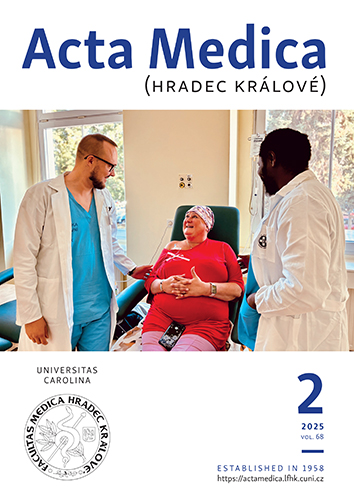ACTA MEDICA, Vol 58 No 2 (2015), 43–48
Factors Affecting the Shear Bond Strength of Orthodontic Brackets – a Review of In Vitro Studies
Waleed Bakhadher, Hassan Halawany, Nabeel Talic, Nimmi Abraham, Vimal Jacob
DOI: https://doi.org/10.14712/18059694.2015.92
zveřejněno: 31. 08. 2015
Abstract
The adhesive material used to bond orthodontic brackets to teeth should neither fail during the treatment period, resulting in treatment delays, untoward expenses or patient inconvenience nor should it damage the enamel on debonding at the end of the treatment. Although the effectiveness of a bonding system and any unfavorable effects on the enamel may be studied by conducting in-vivo studies, it is nearly impossible to independently analyze different variables that influence a specific bonding system in the oral environment. In-vitro studies, on the other hand, may utilize more standardized protocols for testing different bonding systems and materials available. Thus, the present review focused attention on in-vitro studies and made an attempt to discuss material-related, teeth-related (fluorotic vs non-fluorotic teeth) and other miscellaneous factors that influences the shear bond strength of orthodontic brackets. Within the limitations of this review, using conventional acid-etch technique, ceramic brackets and bonding to non-fluorotic teeth was reported to have a positive influence on the shear bond strength of orthodontic brackets, but higher shear bond strength found on using ceramic brackets can be dangerous for the enamel.
klíčová slova: Orthodontic brackets; Acid etching; Bond strength; Fluorosis

Factors Affecting the Shear Bond Strength of Orthodontic Brackets – a Review of In Vitro Studies is licensed under a Creative Commons Attribution 4.0 International License.
210 x 297 mm
vychází: 4 x ročně
cena tištěného čísla: 150 Kč
ISSN: 1211-4286
E-ISSN: 1805-9694
